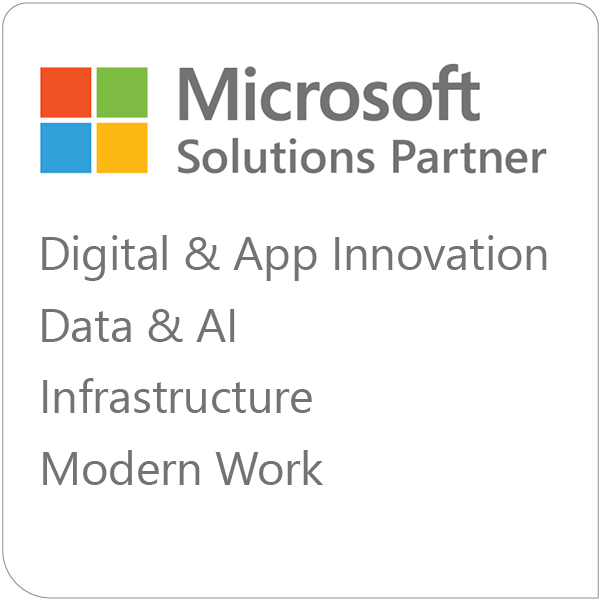Introduction
In today's digital world, data is the lifeblood of organizations. From customer information to intellectual property, sensitive data is constantly being collected, stored, and shared across complex IT environments. With the increasing frequency and sophistication of data breaches, implementing a robust data loss protection strategy has never been more crucial. The consequences of a data breach can be severe, from reputational damage and customer loss to hefty regulatory fines. In 2021, the average cost of a data breach reached a record high of $4.24 million, according to IBM's Cost of a Data Breach Report.
Marriott International knows these consequences all too well. In 2018, the hotel giant discovered a breach that had exposed the personal data of over 500 million guests, including names, addresses, phone numbers, email addresses, passport numbers, and credit card information. The breach, which went undetected for four years, resulted from the compromise of the reservation database of Starwood Hotels, which Marriott had acquired in 2016. The incident led to $72 million in fines from the UK's Information Commissioner's Office for GDPR violations, along with an estimated $200 million in other costs. It serves as a stark reminder of the high stakes of data protection in the digital age.
Maximizing data protection requires a multi-layered approach that addresses risks across the entire data lifecycle. This includes identifying and classifying sensitive data, assessing and mitigating risks, establishing clear handling policies, implementing strong access controls and encryption, securing endpoints, and being prepared to respond to incidents. In this article, we'll take a deep dive into these seven essential steps every organization should take to keep their valuable data safe.
Step 1: Identify and Classify Sensitive Data
The foundation of any data protection strategy is knowing your data. This means conducting a comprehensive inventory of all data across the organization, from structured databases to unstructured data like emails and documents. Data discovery tools can automate this process, scanning networks and systems for sensitive information like personal data, financial records, and intellectual property.
Once all data is inventoried, it needs to be classified based on its sensitivity level. A common classification scheme includes: Public data that can be freely shared without causing harm, such as marketing materials; Internal data meant for internal use only, such as company policies and directories; Confidential data that is sensitive data that could cause harm if disclosed, such as employee records and business plans; and Restricted data which is highly sensitive data that could cause severe harm if compromised, such as customer financial data and trade secrets.
Why Data Classification Matters
Classifying data allows organizations to apply security controls commensurate with the data's sensitivity. For example, public data may not need to be encrypted, while restricted data likely requires the highest levels of protection like multi-factor authentication and end-to-end encryption.
Failing to properly classify data can lead to security gaps. Take the example of a marketing contractor given access to what's believed to be a customer contact list for a campaign. However, the spreadsheet also contains customer purchase histories and credit card numbers. Without proper classification, this highly sensitive financial data could be mishandled and exposed. This is precisely what happened to Home Depot in 2014. Hackers used a vendor's stolen credentials to access the retailer's network and install malware on self-checkout kiosks to steal 56 million credit card numbers and 53 million email addresses. The breach cost Home Depot over $200 million. Proper data classification and segregation of duties could have limited the blast radius of the third-party compromise.
Data classification is also critical for compliance with data protection regulations like GDPR, which require higher protection standards for personal data. Classifying data helps ensure the right controls are in place to meet these obligations. In fact, GDPR levies fines of up to 4% of annual global revenue or €20 million (whichever is greater) for non-compliance with its data protection principles, including failures to properly secure personal data.
Step 2: Assess Risks and Vulnerabilities
With data inventoried and classified, the next step is understanding the threats and vulnerabilities that could lead to data loss. This requires a thorough risk assessment that looks at factors like the threat landscape, security posture, and compliance obligations.
The threat landscape considers what types of attackers and attacks the organization is likely to face based on its industry and data holdings.
Evaluating security posture means looking at how well the organization is currently protecting its data across various dimensions like access controls, encryption practices, network security, and endpoint protection to identify gaps and weaknesses.
Compliance obligations must also be considered to ensure the organization is meeting the data protection requirements of applicable regulations. Failing a compliance audit can lead to hefty fines and reputational harm.
Understanding Your Data Risk Landscape
A real-world example illustrates the importance of proactive risk assessment. In 2013, Target suffered a massive data breach that exposed the personal and financial data of over 110 million customers. The breach began with a phishing email sent to an HVAC contractor that worked with Target. The attackers used the contractor's stolen credentials to gain a foothold in Target's network and eventually install malware on point-of-sale systems to steal customer data.
Target had assessed its own security controls but failed to adequately assess third-party risk. The company has since paid over $300 million in legal fees, settlements, and remediation costs as a result of the breach. Proactively assessing and mitigating supply chain risk could have prevented this costly incident.
Step 3: Establish Data Handling Policies and Procedures
With risks identified, organizations need clear rules for how data should be handled at each stage of its lifecycle. This includes policies and procedures for collection, storage, usage, sharing, retention, and disposal.
Collection policies govern what data is collected, for what purposes, and with what consents. Data minimization principles, which call for collecting only necessary data, should be followed. Storage policies define where data can be stored, for how long, and with what security controls. There may also be data localization requirements prohibiting certain data from being stored outside the country.
Usage policies specify who can access data and for what purposes, distinguishing between acceptable and unacceptable uses. Sharing policies control the conditions under which data can be shared internally or with third parties and what security controls and agreements need to be in place.
Finally, retention and disposal policies ensure data is kept only as long as needed to meet business and legal requirements and then securely deleted.
Building a Data-Centric Security Policy
Consider a healthcare provider developing a data handling policy in line with HIPAA requirements. The policy might state that access to electronic protected health information (ePHI) is restricted to the minimum necessary for an employee's role. Doctors can view complete patient records, but a billing specialist may only access insurance and payment data.
The policy might also mandate encryption of ePHI both at-rest and in-transit to prevent unauthorized access. Regular access audits are required to ensure permissions remain appropriate. And when a patient requests their data be deleted, verification and secure deletion procedures must be followed.
Well-defined, risk-based policies set clear expectations for employees and help ensure consistent, compliant data handling practices across the organization. However, policies alone aren't enough. Employees need regular training to understand their data protection responsibilities. And policies need to be enforced with technical controls and ongoing monitoring.
Step 4: Implement Strong Access Controls
One of the biggest threats to data security is unauthorized access, whether by external attackers or malicious insiders. Implementing strong access controls is critical to ensuring only authorized users can access sensitive data. The principle of least privilege should be the guiding force - users should have the minimum access necessary to perform their job functions.
Multi-factor authentication (MFA) is one of the most effective ways to prevent unauthorized access, even if a password is compromised. With MFA, users must provide an additional form of verification beyond a password, such as a code from an authenticator app or a biometric factor like a fingerprint. According to Microsoft, MFA can block over 99.9% of account compromise attacks.
Role-based access control (RBAC) is another key strategy. With RBAC, access is granted based on a user's role within the organization. Job functions are mapped to permissions so users only have access to the data and systems they need for their role. For example, a financial analyst might have read access to financial reporting systems but not the ability to modify data.
Regularly auditing and adjusting access permissions is also crucial. As employees change roles or leave the company, their access needs to be updated or revoked immediately. Dormant accounts and excessive permissions are common targets for attackers. Implementing processes for prompt offboarding and regular access reviews helps close these security gaps.
Other access control best practices include enforcing strong password policies with length, complexity, and rotation requirements, using single sign-on (SSO) and identity and access management (IAM) platforms to centralize and standardize access management, segmenting networks to limit lateral movement in case of a breach, and monitoring user activity for suspicious behaviors.
Step 5: Encrypt Data At-Rest and In-Transit
Even with strong access controls, organizations must prepare for the possibility of data falling into the wrong hands. Encryption is a powerful tool for rendering data unreadable and unusable without the proper decryption key. Encrypting data both at-rest and in-transit is a best practice for reducing the impact of a data breach.
At-rest encryption protects data stored on servers, databases, laptops, and other devices. If a device is lost or stolen, the data remains secure. Microsoft's BitLocker is a common at-rest encryption solution for Windows devices, while Apple's FileVault provides native encryption for Macs. Many enterprise storage and database solutions also offer at-rest encryption options.
When data traverses networks, it's open to interception by malicious actors. In-transit encryption using protocols like SSL/TLS creates a secure tunnel that prevents eavesdropping and tampering. This is particularly important when data is being transmitted over public networks. Web browsers indicate a secure connection with the padlock icon and "HTTPS" prefix in the address bar.
For highly sensitive data, consider end-to-end encryption where data is encrypted on the sender's system and only decrypted on the recipient's system. This provides protection even if an attacker gains access to the transmission server. Popular end-to-end encryption tools include Signal for messaging and ProtonMail for email.
Proper encryption key management is also critical. Encryption keys must be securely generated, stored, and managed to prevent unauthorized access. Many organizations use hardware security modules (HSMs) for secure key storage and management.
A breach disclosure from Aetna in 2018 illustrates the importance of encryption. The health insurer was fined $1.15 million by the New York Attorney General for exposing the HIV status of 2,460 members through the windows of mailed envelopes. The fine was so steep in part because the sensitive data was not encrypted, violating HIPAA requirements. Had the data been encrypted, the exposure would have been far less harmful.
Step 6: Secure Endpoints and Devices
Endpoint devices like laptops, smartphones, and tablets are often the weakest link in an organization's security chain. These devices routinely access and store sensitive data but are also easily lost or stolen. And in today's remote and hybrid work environment, many of these devices are connecting to corporate resources from insecure home and public networks.
Endpoint security starts with ensuring devices are properly configured and patched. Unpatched software vulnerabilities are a common attack vector. In 2017, credit reporting giant Equifax suffered a massive data breach exposing the sensitive personal information of 147 million people. The breach stemmed from a failure to patch a known vulnerability in the Apache Struts web application framework. Implement automated patch management to ensure devices are updated with the latest security fixes. Also ensure devices are configured securely by disabling unnecessary services, closing unused ports, and following hardening guidelines.
Next, deploy endpoint protection software to detect and prevent malware infections. Antivirus solutions use signatures and heuristics to identify known malware, while endpoint detection and response (EDR) tools use behavior-based algorithms to spot new and fileless malware.
When devices connect to untrusted networks, a virtual private network (VPN) should be used to encrypt traffic and prevent snooping. VPNs create a secure tunnel between the device and the corporate network to protect data in transit. In 2020, the shift to remote work due to the COVID-19 pandemic led to a surge in VPN usage. However, insecure VPN configurations can themselves be a vulnerability. Proper VPN setup and security is crucial.
For company-owned mobile devices, mobile device management (MDM) solutions provide centralized management and security controls. IT teams can enforce passcode policies, remotely wipe lost or stolen devices, and containerize corporate data to prevent mixing with personal data.
Finally, develop policies and educate employees on secure BYOD (bring your own device) practices if personal devices are allowed for work. This might include requiring device encryption, prohibiting download of sensitive data, and reserving the right to remotely wipe devices.
Step 7: Prepare for Incidents with Detection and Response Plan
No organization is immune to security incidents. Having the ability to quickly detect, respond to, and recover from incidents is key to minimizing damage.
Effective incident response starts with the right monitoring and alerting capabilities in place to detect potential incidents promptly. This includes collecting and analyzing log data from across the IT environment to spot suspicious activity, deploying intrusion detection and prevention systems (IDPS) to identify and block malicious network traffic, using security orchestration and automation (SOAR) tools to automatically triage alerts and speed response times, and establishing thresholds and alert parameters to differentiate real threats from benign anomalies. Improving detection capabilities could have significantly reduced the window of compromise.
Once an incident is detected, a well-planned and practiced incident response (IR) plan guides the organization through containment, eradication, and recovery. Key steps in an IR plan include initial triage to determine the scope and severity of the incident, containment measures like isolating infected systems and blocking malicious IPs, evidence gathering and investigation to determine root cause, eradication of the threat and remediation of vulnerabilities, recovery of systems and data often from clean backups, and post-incident review to identify lessons learned and improvement opportunities.
Regularly testing the IR plan through tabletop exercises and simulated attacks is crucial to building "muscle memory". These practice sessions reveal plan gaps and help teams build the communication and coordination skills needed for effective incident handling. In the chaos of an actual incident, a well-drilled plan can make the difference between a minor event and a major breach.
Data backups are another critical aspect of IR preparation. In the event of a destructive malware attack like ransomware, backups may be the only way to recover data. Following the 3-2-1 rule - keeping 3 copies of data on 2 different storage types with 1 copy offsite - and regularly testing restore procedures can ensure backups are viable when needed most.
Finally, consider purchasing cybersecurity insurance to offset the costs of responding to and recovering from an incident. Policies can cover expenses like legal fees, customer notification, credit monitoring, and business interruption. However, insurers are becoming more stringent in their coverage requirements as cyber claims rise. Robust security controls are increasingly a condition of coverage. As the cyber insurance market hardens, strong cybersecurity practices are becoming a business imperative.
Conclusion
In today's high-risk digital environment, data loss protection cannot be an afterthought. Organizations must take proactive steps to safeguard sensitive data across its entire lifecycle, from collection to deletion. By following the seven steps outlined in this article - inventory and classification, risk assessment, policy development, access control, encryption, endpoint security, and incident preparation - organizations can significantly strengthen their data security posture.
However, data protection is an ongoing journey, not a destination. As data volumes grow, regulations evolve, and the threat landscape shifts, organizations must continually reassess and adapt their defenses. Emerging technologies like homomorphic encryption, which allows computation on encrypted data, confidential computing, which protects data in use, and AI-powered threat detection offer new opportunities to stay ahead of threats.
For example, in 2020, the COVID-19 pandemic led to a surge in telehealth usage. To protect sensitive patient data during virtual consultations, some healthcare providers turned to confidential computing solutions that encrypt data in memory, preventing unauthorized access even if the underlying infrastructure is compromised. As more data is processed at the edge and in the cloud, these advanced encryption and security techniques will become increasingly important.
Ultimately, effective data protection requires a combination of people, processes, and technology working together. It's not just the responsibility of IT and security teams, but of every employee who handles data. Building a culture of security awareness, where everyone understands the value of data and their role in protecting it, is key to turning policies into practice.
This cultural shift is exemplified by the "if you see something, say something" mantra adopted by many organizations. Employees are encouraged to report suspicious emails, unexpected attachments, and other potential security threats.
As we've seen, the consequences of a data breach can be severe - from financial losses to reputational harm. The 2017 Equifax breach resulted in over $1.7 billion in losses, the resignation of the company's CEO, and a 35% drop in its stock price. But by making data protection a top priority and investing in robust controls, organizations can secure their most valuable assets and maintain the trust of their customers and stakeholders.
The stakes are only getting higher. Gartner predicts that by 2024, 75% of the world's population will have its personal data covered by modern privacy regulations. And as digital transformation accelerates, the volume and variety of data organizations must protect will only continue to grow.
But with a comprehensive, risk-based approach to data protection, organizations can rise to this challenge. By identifying and classifying sensitive data, assessing and mitigating risks, establishing clear policies and procedures, implementing strong access controls and encryption, securing endpoints, and preparing for incidents, organizations can create a robust data defense that adapts to evolving threats.
In a data-driven world, effective data loss protection is not just good security - it's good business. It's the key to harnessing the power of data while maintaining customer trust and brand reputation. As organizations continue their digital transformations, putting data protection at the forefront will be the difference between leaders and laggards, between those that thrive in the digital age and those that get left behind.






